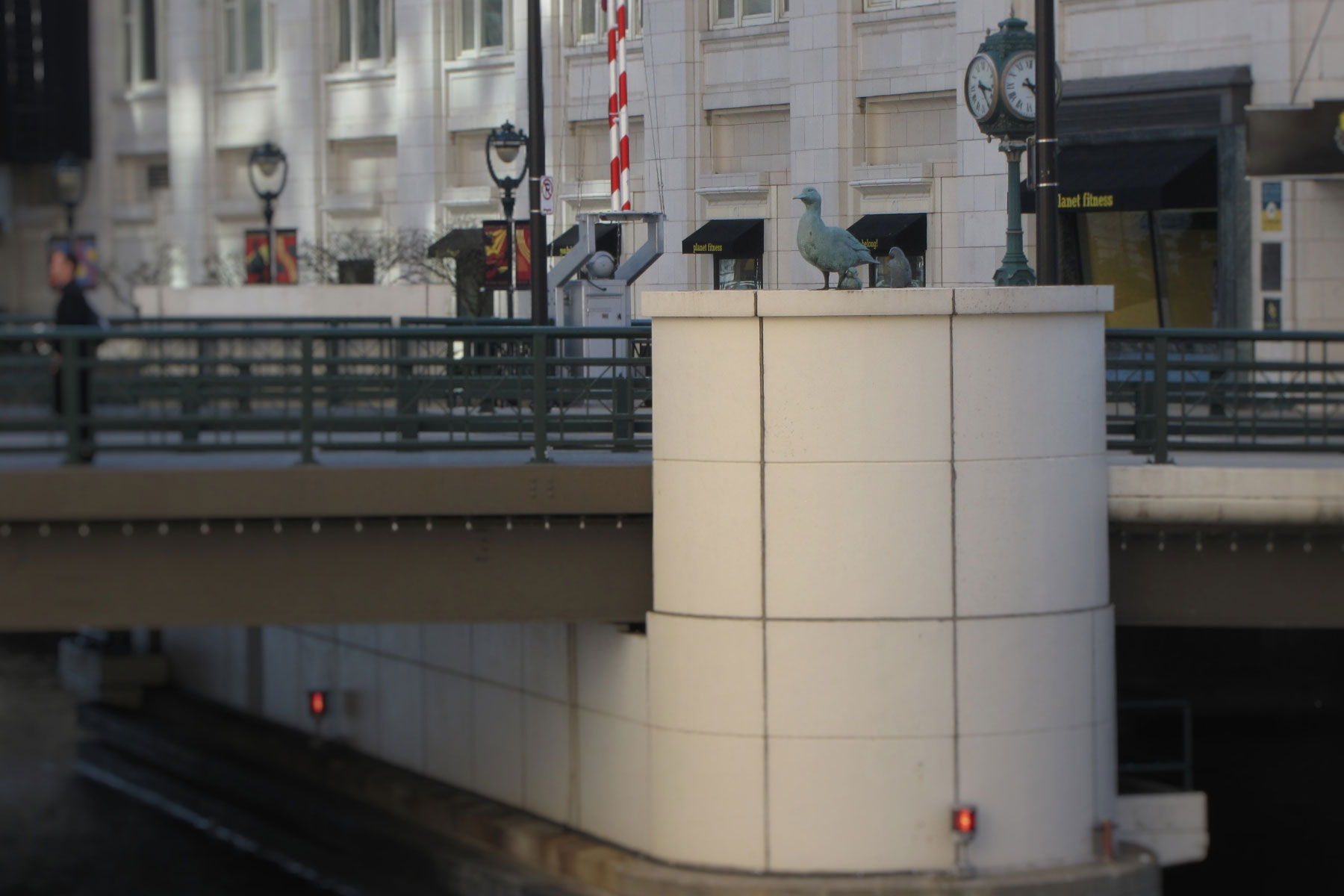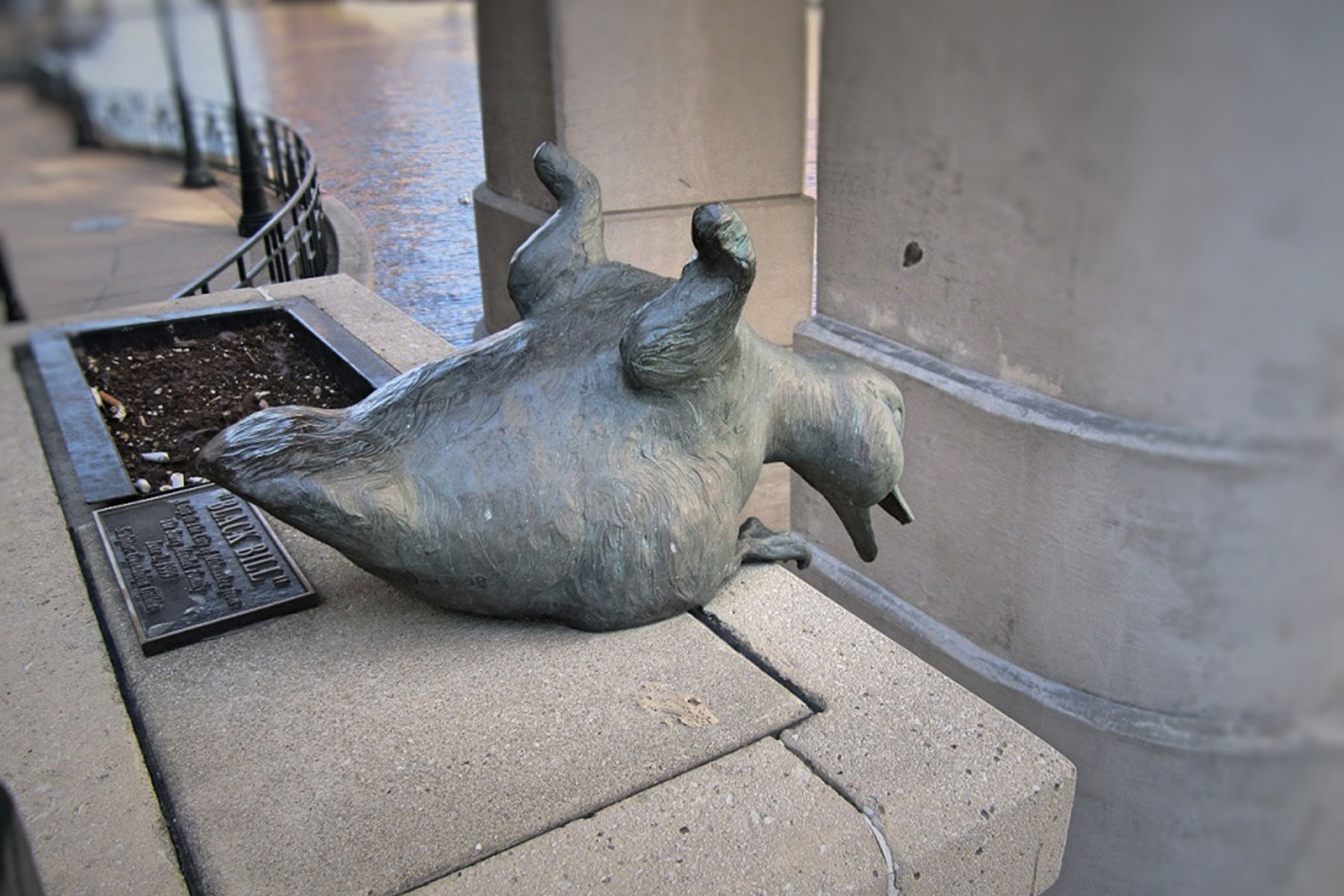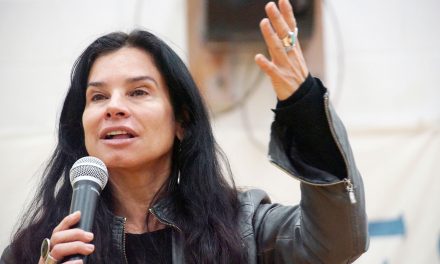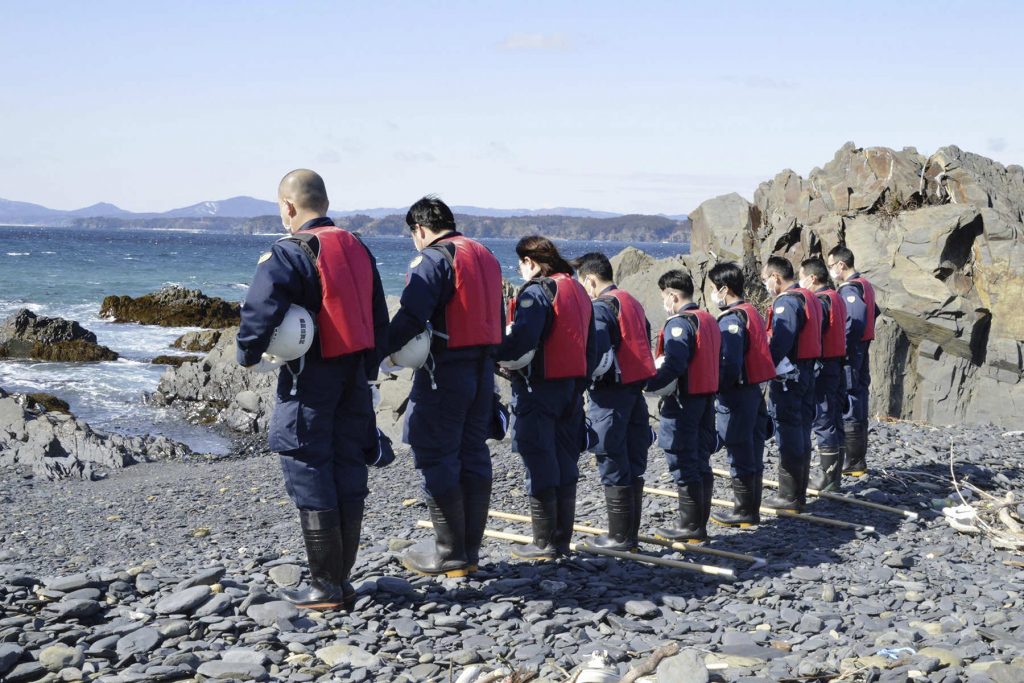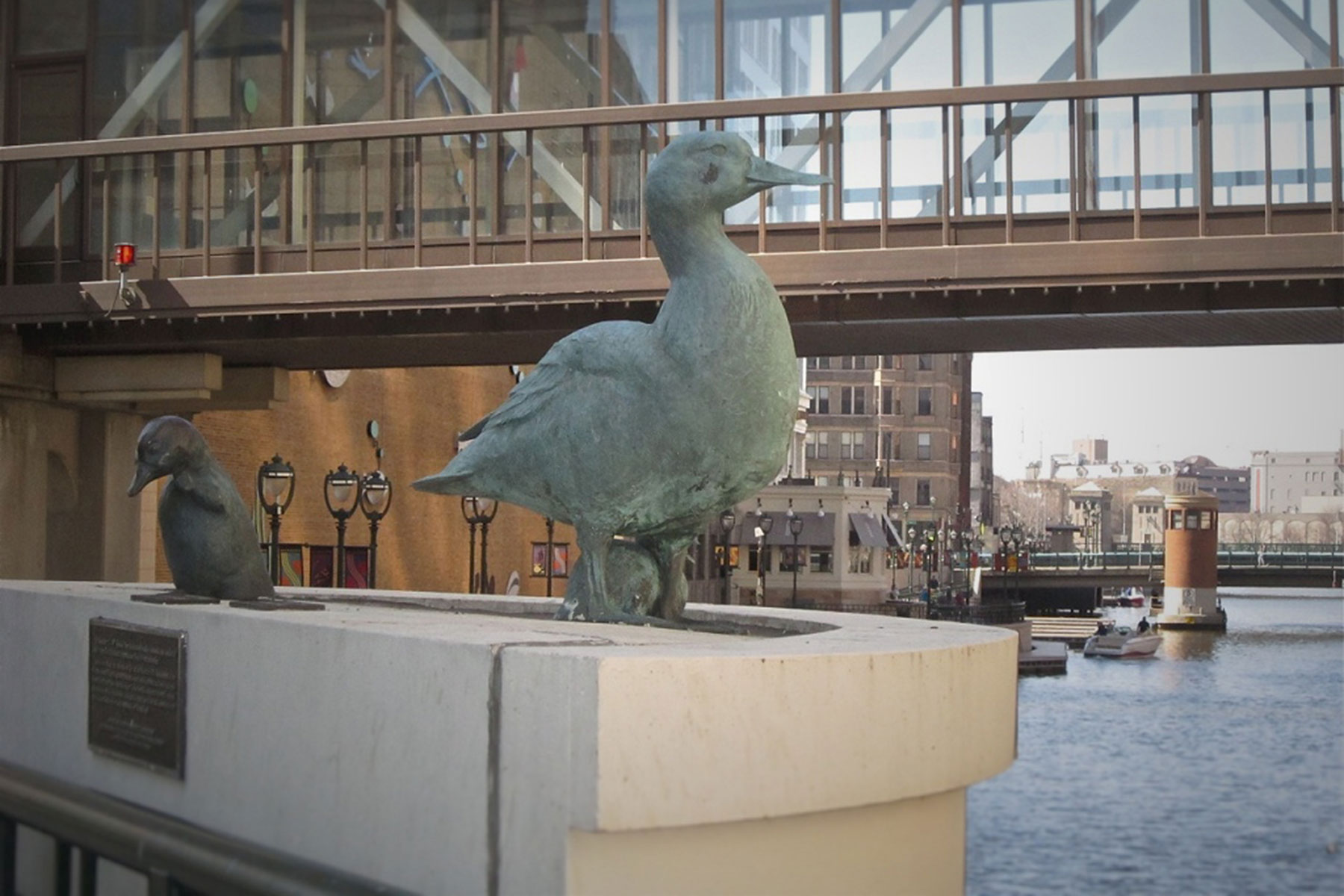
The story of Gertie, a mallard duck who hatched her eggs on a bridge piling in the heart of downtown, is a familiar one to many Milwaukeeans. Updates on the duck’s activities front-page news for a full month in spring of 1945. She was featured on the cover of Life magazine, profiled in Reader’s Digest, and was the subject of a prime-time television show in 1963. Last but not least, a children’s book retelling the story of Gertie sold more than a million copies.
To understand the impact a small, wild duck made on the city, you have to turn the clock back 71 years.
In spring 1945, World War II was drawing to a close. Allied forces were advancing steadily through Germany and closing in on the Japanese home islands. After years of food and fuel rationing, war bond drives and scrap-metal drives, and sad news from distant battlefields, Milwaukeeans were ready for a change.
On April 27th, 1945, the same day Italian fascist dictator Benito Mussolini was captured by partisans while attempting to flee to Switzerland, a bridge tender assigned to the Wisconsin Avenue lift bridge called the Milwaukee Journal to report a mallard duck had built her nest 10 feet above the river on the hollow top of a rotted piling next to the busiest bridge in Wisconsin.
Writer Gordon MacQuarrie dropped by to see for himself and wrote a lighthearted account for his paper, noting, “The bridge operators can hardly wait to see the old lady hatch out the ducklings.”
The story – with daily updates for the next 37 days – created a sensation. Wire services carried the articles nationwide. Even Stars and Stripes, a publication for members of the armed services reprinted the daily duck reports in serial form. Two members of the U.S. Army Air Corps, stationed in England, Nicholas Georgiady and Lou Romano, followed the news with special interest. Milwaukee was their hometown.
“Anything catching the more human side of living was a nice relief,” Georgiady recalled in a 1997 interview in the Milwaukee Journal-Sentinel.
Journal reporter MacQuarrie gave Gertie her name although writers for the rival Milwaukee Sentinel persisted in calling her “Mrs. Francis Drake.”
Gertie laid her eggs oblivious to the ever-growing crowd of onlookers and the hammering din of streetcars crossing the steel bridge.
Milwaukeeans took Gertie to heart. A planned project to replace the rotted pilings was put on hold. City officials, concerned by an oil slick in the river, ordered the pumping of an additional five million gallons of lake water to flush the river clean. On Mother’s Day, hundreds of cards were mailed to the duck. Marching bands in the annual Memorial Day parade stopped playing as they reached the bridge and walked across in silence to avoid disturbing Gertie.
MacQuarrie’s update for May 30th, 1945, included a conversation with a long-distance trucker who had stopped to see the nest while driving a load from Chicago to Sturgeon Bay. It was the second time he had seen Gertie, the truck driver explained. He hoped the eggs might hatch while he was there, for it would be a week before he would be back in the area.
“As if in response to this attention,” MacQuarrie wrote, “Gertie slowly raised from the six famous eggs to carefully shift them with her adroit bill … then settled back on the eggs with the now-famous wiggle that never fails to bring laughs from the gallery.”
That same day, Adolf Hitler committed suicide in an underground bunker in Berlin.
Soon afterward, the eggs began to hatch. The following day, May 31st, a newborn duckling dubbed “Black Bill” got into trouble. Staggering around the piling while onlookers gasped and screamed, he fell 10 feet to the river below making, we are told, a very small splash.
The on-duty bridge tenders, Paul Benn and George De Graace, scrambled into a rowboat. Black Bill could swim just fine, and he led the men on a zig-zagging chase back and forth across the river. Finally, they were able to scoop him up with a long-handled net and return him to the nest. “You understand,” MacQuarrie wrote, “by this time, 2,000 persons on the bridge were hysterical.”
That night a violent storm blew in. At midnight, in the wind and rain, Black Bill and a sibling went over the edge. The bridge tenders, Fred Schultz and Alex Rehorst, spotted two ducklings in the river, two rain-soaked ducklings and a partially hatched egg on the nest, and Gertie nowhere in sight.
Rehorst, Schultz, and the trusty rowboat swung into action. The two swimmers were rescued. A short time later the ducklings fell in again. The worried bridge tenders called Larry Hautz of the Izaak Walton League, who arrived at 1 in the morning and moved the four surviving ducklings and the partially hatched egg into the warm bridge house. In the meantime, Rehorst and Schultz found Gertie and brought her into the bridge house.
Hautz examined the partially hatched egg. Gently he broke away the shell to reveal a cold – but still alive – duckling. Hautz set his hat on a chair before the open door of the coal stove, lined it with wads of cotton, and placed the little bird inside. All through the night, he watched over the little duck, periodically removing it and rolling the bird in dry corn flour to absorb moisture from its feathers.
The account of Black Bill’s misadventures, the rescues performed by the bridge tenders, the wild storm, and Hautz’s fretful watch over a sickly bird were detailed at length in the June 1, 1945, Milwaukee Journal. Total American casualties for World War II, noted a separate story in the same day’s paper, had surpassed the one-million mark.
In Milwaukee, five ducklings were alive but a sixth had disappeared in the stormy night. Clearly, the piling was no place to raise a family. The nearby Gimbel’s Department Store offered the use of a display window and hired three registered nurses, working rotating eight-hour shifts, to continually monitor the temperature and humidity of Gertie’s new home.
On June 4th, 1945, Gertie and her family were released into the Juneau Park lagoon. City officials estimated Gertie had been viewed 2.6 million times in just over a month and one-half. Later, when MacQuarrie visited the lagoon, he realized there was no way to tell which of the park’s many ducks was the famous Gertie.
Nicholas Georgiady and Lou Romano, the two homesick airmen who followed Gertie in the pages of Stars and Stripes returned home after the war. Both became school teachers and worked together co-writing educational materials. They produced 105 children’s books, several filmstrips, and seven textbooks. In 1959, the men wrote a children’s book called “Gertie the Duck.” It became a million seller.
When the Milwaukee Journal-Sentinel asked co-author Louis Romano in a March 1, 2001, interview why the story proved so appealing, he said, “It gives Milwaukee a wonderful, warm feeling – that a whole city would go crazy over a duck and her family.”
On May 7, 1945, when Gertie was still sitting on her unhatched eggs and the war still raged, the Milwaukee Journal printed this editorial:
“Gertie is part of nature’s clean and beautiful world, unspoiled and undisturbed by man. She is no specimen in a zoo, no clipped wing prisoner of a park. Gertie settled right down here in the middle of the city because she liked it.
“And Gertie has taken our minds off some of the ugly things around her; she even helps us forget, for a few minutes, the horrible bungle man has made of his world.”

